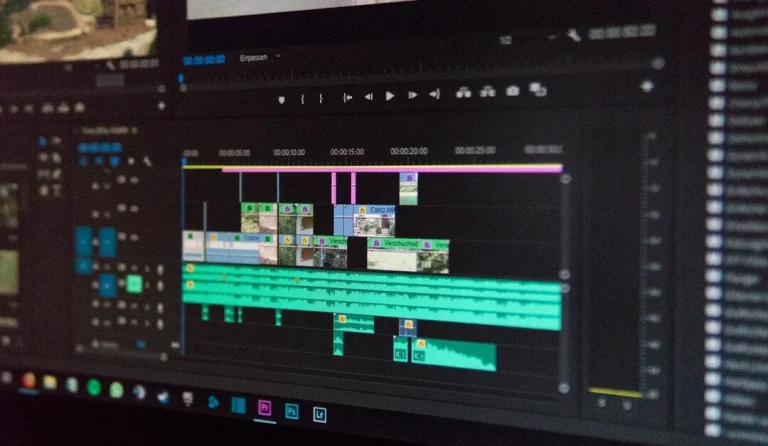Pro Tips for Your Smartphone Gimbal: Better Stabilization, Faster Filming

In recent years, mobile phone video recording has developed rapidly. Thanks to modern camera sensors, smartphones can now deliver impressive footage—but only with a Smartphone-Gimbal can their full potential be realized. This compact, motorized stabilization system compensates for shakes, ensuring professional-grade recordings even when moving.
Whether it’s vlogs, short films, or travel documentaries, a smartphone gimbal elevates your work from amateur to cinematic level. Through precise sensor control, recordings remain stable even on uneven terrain or during fast movements, allowing for smooth transitions between scenes.
Also Read: How Technology is Revolutionizing Human Resources Compliance
Setting up Your Smartphone Gimbal: The Foundation for Perfect, Stable Footage
The correct setup is crucial before you start filming. A common beginner mistake is not properly balancing the smartphone. It should be positioned almost horizontally and remain horizontal even when the motors are switched off. This reduces the load on the motors and simultaneously extends battery life.
Modern smartphone gimbals like the Insta360 Flow 2 Pro use high-precision sensors to detect even the smallest movement deviations. However, manual fine-tuning remains indispensable for absolutely jerk-free recordings. Make sure that phone cases or magnetic components do not affect the balance.
Also, use the gimbal app for calibration. A brief calibration before every shoot—especially after transport or temperature changes—ensures optimal stability. Once the gimbal is set up correctly, your smartphone transforms into a true filmmaking tool that enables stable and high-quality videos in any situation.
Movement and Axis Control: Precision in Every Direction
The greatest advantage of a smartphone gimbal lies in its precise movement control. Modern models stabilize three axes—pan, tilt, and roll—independently. Understanding these axes is crucial for deliberately controlling the camera movement.
In “Follow” Mode, the gimbal fluidly follows your movements—ideal for dynamic scenes. In “Lock” Mode, the camera remains fixed on a subject, perfect for interviews or stationary shots. Professional users recommend performing gentle pans with the joystick or app control. This technique creates cinematic depth-of-field effects that are almost impossible to achieve with handheld shots.
Image Stabilization in Everyday Use: How to Use Your Smartphone Gimbal Effectively
The true strength of a smartphone gimbal becomes apparent in practice. Whether walking, running, or cycling, it keeps your camera stable. However, true stability is created only through the combination of technology and body control.
When walking, slightly bend your knees, gently roll your foot from heel to toe, and keep your elbows close to your body. This movement coordination, combined with the gimbal technology, ensures particularly fluid footage.
Many models also offer intelligent tracking. Features like ActiveTrack or Depth Tracking automatically keep the subject in focus—ideal for solo videos or interviews. Use these features strategically to create smooth movements and precise perspective changes. Supplement your recordings with ND filters or an external microphone as needed to improve both visual and acoustic quality.
Creative Filming Techniques with the Smartphone Gimbal
Experienced content creators know: stable shots are just the beginning—true creativity emerges through movement. A smartphone gimbal opens up cinematic perspectives that were previously only possible with professional equipment.
Try techniques like the “Push-in Shot” (slowly moving closer to the subject) or the “Surround Shot” (camera movement around the subject). Time-lapse videos also benefit enormously from precise stabilization. Many apps offer pre-set modes that automate these movements—ideal for social media videos or travel documentaries.
With effects like “Inception” or “Barrel Roll,” you create impressive rotating movements around the camera’s own axis—visually spectacular and immediately attention-grabbing.
From Raw Footage to Cinematic Artwork
Post-production is a crucial step to fully exploit the potential of a smartphone gimbal. Even the most stable videos require refinement. Use software like Insta360 Studio, LumaFusion, or DaVinci Resolve to optimize exposure, color values, and transitions.
While many gimbal apps offer integrated editing functions for quick social media clips, a workflow involving color correction and precise cutting/editing is recommended for professional results. LUTs can be used to standardize the style of your videos.
“Presenting” here means more than just playback—it stands for the conscious planning and design of the overall visual experience. Your recordings should convey emotions, not just movement.
The Key to Professional Results
Smartphone stabilizers are far more than simple anti-shake aids. They foster creative ideas, control movements, and enable high-quality recordings—anytime, anywhere.
From the correct balance and precise movement control to professional post-production: every step is crucial for the final result. With a little practice, your gimbal will become an indispensable partner that not only stabilizes your footage but also expands your creative expression.






